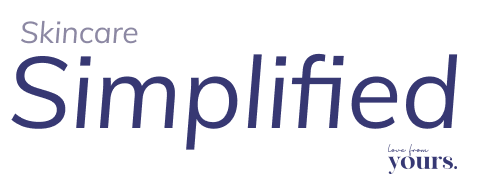What Is Face Yoga and Gua Sha?
Face yoga and gua sha are two slightly different things, but both have been big news over the last few years. They use pressure and repetitive movements on your skin’s surface to boost the appearance of your skin and the underlying muscles.
Both processes are used to fight inflammation, premature aging and to help work the muscles of your face, albeit in slightly different ways. They also both help to relieve muscle tension, boost collagen production, improve blood circulation and press pause on droopy, sagging skin. The biggest hack for face yoga and gua sha is to carry them out consistently and regularly.
Both gua sha and face yoga can also be used as a fast fix when you need to add glow, depuff eye bags or want to prep your skin to apply your skincare routine or makeup too. They’re also great relaxation tools for when you need a little self-care or a confidence boost.
Ready to find out more about both of these face toning tricks? Keep reading.
Face Yoga And Gua Sha: What’s The Difference?
Face yoga is basically what it sounds like: yoga for your face. It involves moving, stretching, relaxing, and positioning your face to help give it a mini-workout that keeps your skin looking smooth and supple. It’s even thought that face yoga can make enough of a difference to help to reduce the appearance of scarring.
You don’t need any special tools to do face yoga, just your hands. You might want to add a little moisturizer or facial oil to add slip and gain some hydration benefits for your skin whilst you massage. Many of the exercises that are classed as face yoga are recommended by dermatologists, and scientific studies have shown that just 30 minutes of facial exercises every other day improves the appearance of your skin.
Gua sha is a little different as it’s all about the face tool. During a gua sha treatment, a flat pebble of jade, known as a gua sha stone, is used to firmly massage the skin in an upward motion. This encourages lifting of the skin and muscles and a reduction in puffiness.
The term gua sha is often translated as ‘scraping’, as it was originally created as a more vigorous treatment for the body. It’s now been made gentler and smoother for the face to avoid damage. Nowadays gua sha stones aren’t just made out of jade, you can get them made from all kinds of materials.
One of the great things about gua sha is that you’ll often spot the benefits immediately after a treatment – it’s particularly good for lymphatic drainage and releasing excess fluid that can leave you looking puffy.
How To Do Face Yoga And Gua Sha
Face yoga and gua sha can both be carried out in the comfort of your own home. Unlike other treatments (like microdermabrasion or microneedling) that are often more effective when carried out in a salon, you don’t need any specialist equipment or training to try out face yoga or gua sha at home.
There are tutorials all over TikTok, YouTube and Instagram to help you find targeted tips for your routine, whether you’re trying out face yoga or testing out your gua sha skills. Whatever your skin goals are, there’s a routine to help you.
How To Do Face Yoga
Face yoga blends facial exercises, massage, acupressure techniques and relaxation all in one treatment, but all you really need is to use your hands and your natural facial movements. Consistency is key, and whatever results you’re looking for from your face yoga, you need to do it daily for best results.
Performing face yoga lying down on your back is best, as gravity gives you a helping hand when it comes to lifting and massaging. Make sure your face and hands are clean by washing with a cleanser before you start. The results you’re looking for will depend on your routine, so choose your tutorial wisely.
Remember, never pull at your skin when you carry out a facial yoga treatment. You want to use a light touch and be gentle on your skin to avoid damaging it. It’s supposed to be a therapeutic treatment for your skin, so make sure that’s how it feels!
How To Do Gua Sha
It’s best to invest in a good quality gua sha tool; ideally one that has contours on the edge so that you can find the right angles for your facial structure.
Start by applying a small amount of facial oil onto clean skin to create a smooth surface for the gua sha tool to glide across your skin. Use the tool all over your face, neck and decolletage in smooth, uplifting strokes.It’s recommended that you do gua sha once a week to get the lymphatic drainage and blood circulation benefits without overstimulating your skin.
If there are specific results that you’re looking for with your gua sha treatment, do some research to find out the best routine to benefit your skin. Afterwards, continue with the rest of your skincare routine with the usual suspects of toner, serum and moisturizer.
Using Face Yoga and Gua Sha Together
Face yoga and gua sha can complement each other perfectly. Although some of the benefits are similar, they ultimately do different things for your skin and can have a powerful effect when they’re combined.
Doing your face yoga routine in the morning can be a great way to revive and refresh your skin, whereas adding gua sha to your evening routine (or before an event) can be a helping hand to drain excess fluid from your face, and the perfect way to relax.
Should You Try Face Yoga and Gua Sha?
Millions of people around the world swear by both face yoga and gua sha to keep their skin looking good, fight signs of aging and boost their wellbeing.
Both routines are inexpensive, easy to do at home (or even if you’re on the go), and can help you gain both short and long-term results for your skin. They also help with wellbeing, relaxation wellbeing and can even help to boost your mood.
So, go on and pick up one of those jade rollers and smooth those stress-induced frowns away!






